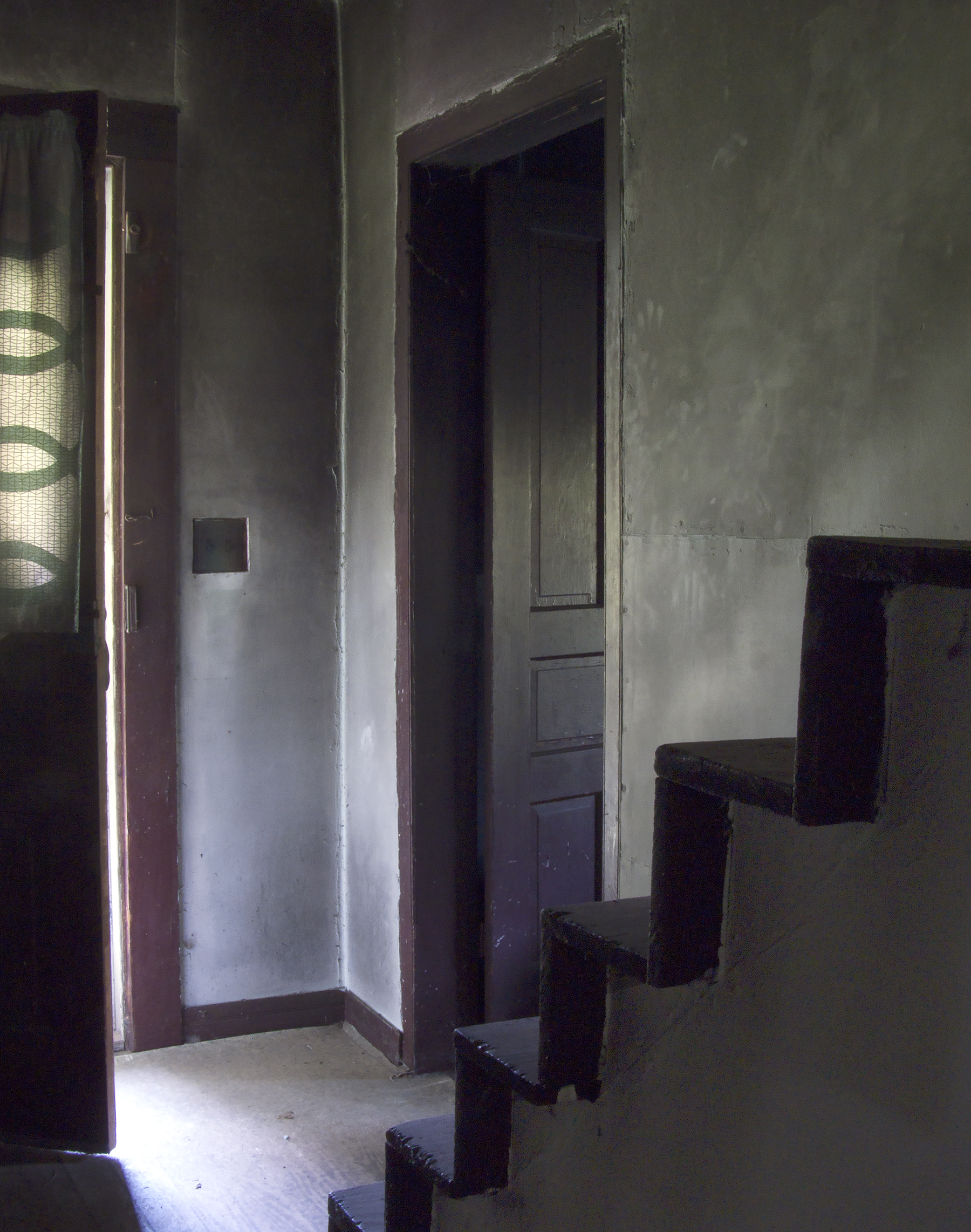




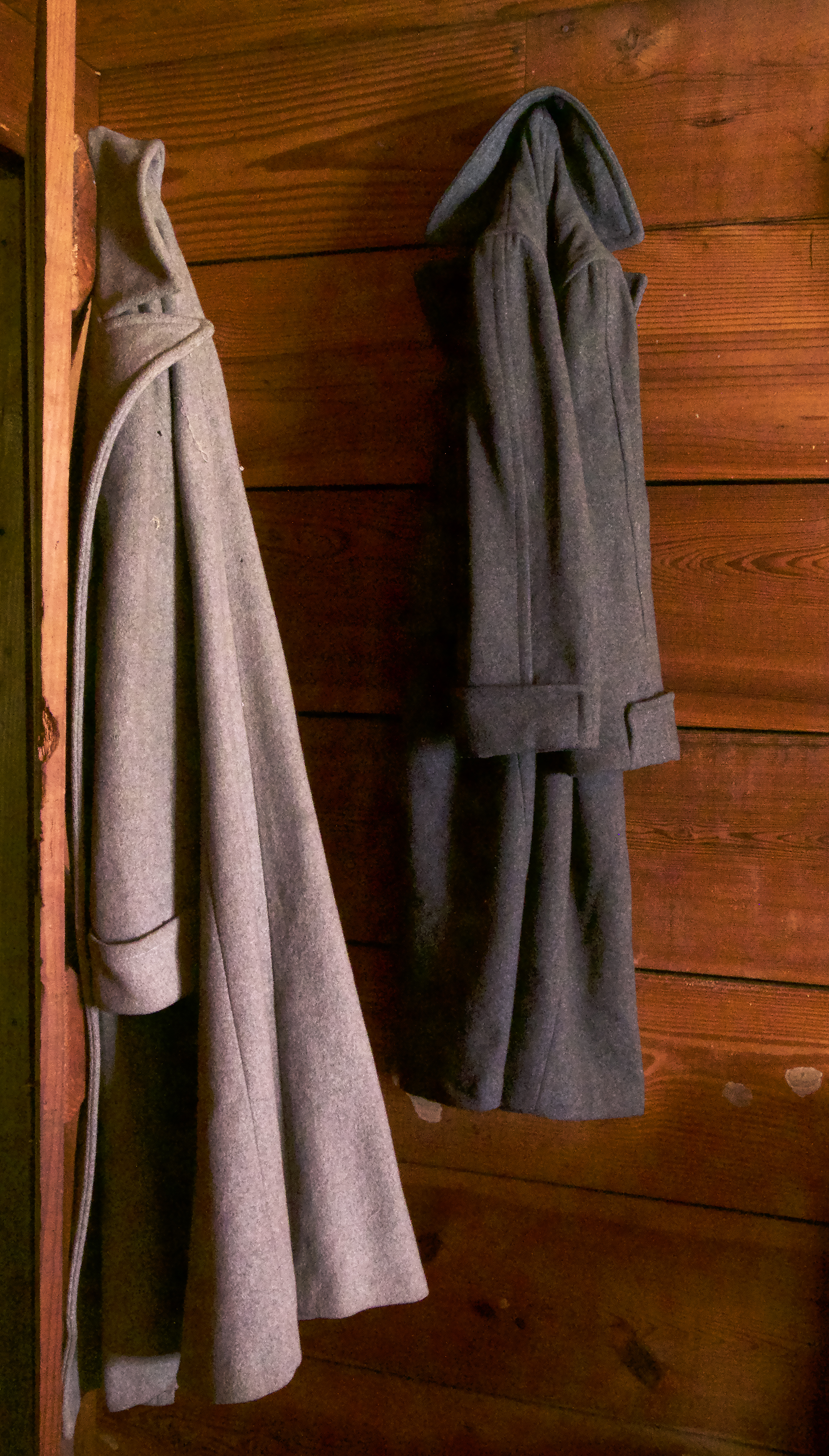
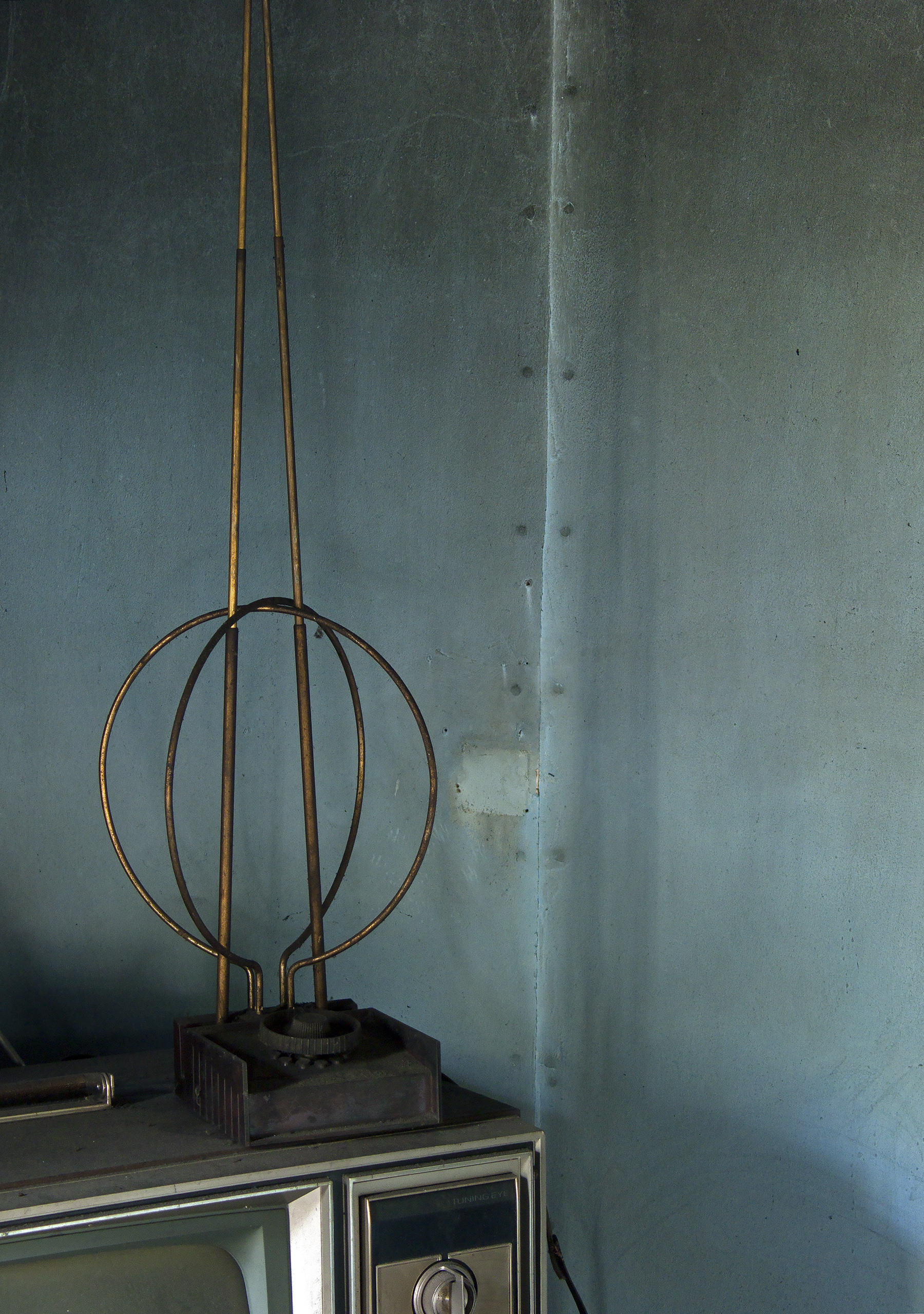
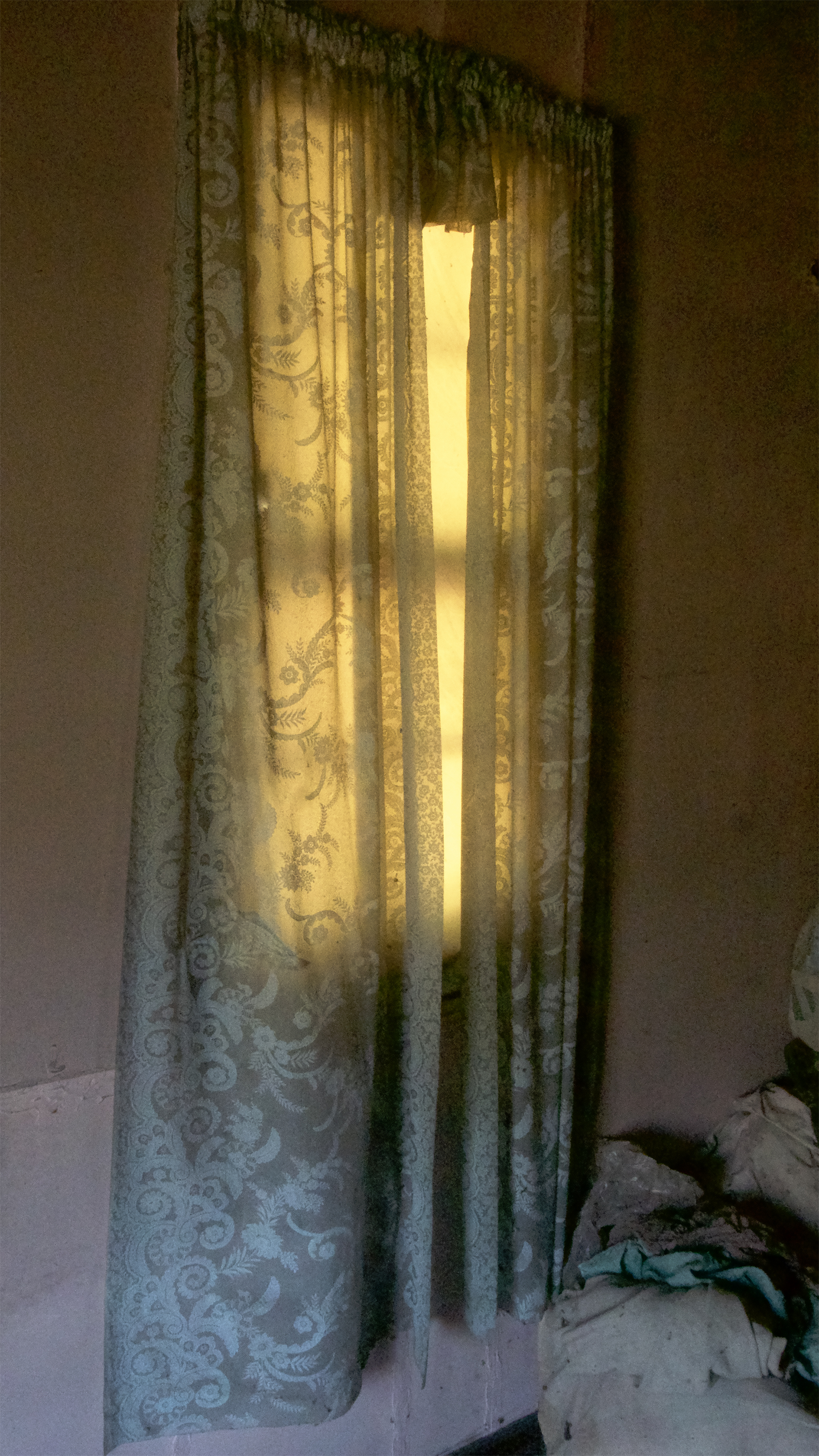
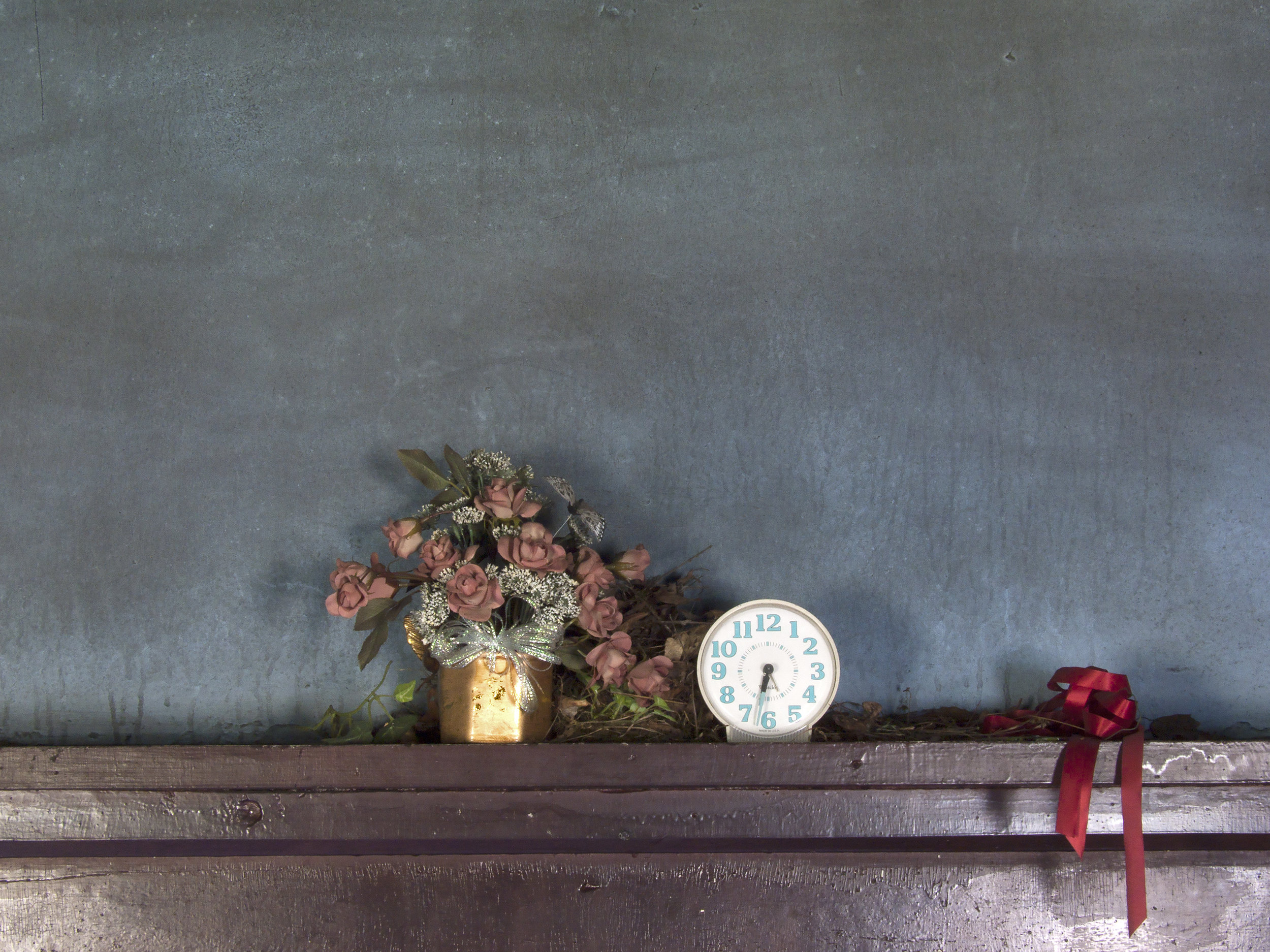

W H A T R E M A I N S
A PORTFOLIO OF NINE PRINTS
“A sequence of photographs functions as a little drama of dreams, with a memory. -Minor White
An old weathered house sits on a back road in western North Carolina. This is not remarkable, for abandoned homesteads dot the landscapes in the rural western region. There is something about this one that invites a second look. It sits on a sheltered hill, looking down on a small farm. No one has lived in the house for years, yet the creaky front porch still offers lovely country views. The once-painted wood siding and tin roof have been unattended for decades, giving the place a worn-down look. Details, inside and out, tell that it is hand-hewn. It is distinct and beautiful in its own way, forlorn in its decay.
People say it was built room by room, by a family who lived there for generations. It started as a one-room shelter, set on rock piles. Rooms were then added as needed. This can be seen in an odd, closed-off space on the second floor, in windows between interior rooms, in a door positioned where it cannot function. Too, the stairway to the second floor is improbable in design, the steps too small, the incline too steep, the ceiling too low.
The sheet board downstairs was never sealed, and it still shows the seams and nails of construction. Long ago, the downstairs rooms were painted a bright blue. Windows are framed by now-tattered blue plastic curtains. A blue stuffed couch and chair sit in the main room. The blue décor gives the impression of a modest attempt to make the place pretty. Lighter spots on the walls tell where pictures
and calendars once hung. An old stove sits in the front room, and soot from burning coal in that stove has darkened the walls with a ghostly, gray patina.
There never was an indoor bathroom.
Each room still has some personal contents, and what remains is intriguing. On the first floor, there is a 1950’s telephone and the box it came in, three vintage televisions set one in front of another on the floor, a few bills and receipts, a condolence card, old-style clothing in piles and on hangers, a faded map of North Carolina.
Wandering through the rooms, it is clear this was once a working, self-sufficient home. A sturdy wood cook stove still occupies the corner of the kitchen. Some upstairs walls are covered with newspapers. One room holds saved seeds from long ago, hung in paper bags from metal hangers. An ancient long gourd hangs from another nail. Canning jars lie strewn about, near a pile of jar lids and rings. The other upstairs room holds things tossed in boxes to be carted away. A few clothing items hang on pegs, including two distinctive woolen coats.
Even now, the house is not entirely uninhabited. In summer, wasps and bees buzz about the upstairs rooms and around the windows. Mud daubers work on their colonies. Thick webs of dust and spiders sway in breezes from open windows. No doubt, critters come and go under the house in the dark.
The people -- who wore the coats, and planted the seeds, and shoveled the coal -- are gone. The foundation is unstable, the floors weakening, the window frames rotting. There is talk of tearing down the house.
These images of the old house are, as Minor White has said, “things for that they are, and what else they are.” It has been a gift to find and photograph this house as a tribute to the people who once lived there.
- Carol Lawrence
2018